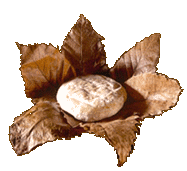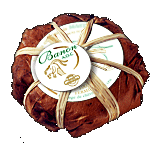A specific herd
The local race of goat herds (Provençal Common Goats, Roves, Alpines) has to ensure an average production limited to 850 Kg of milk a goat per year.
A pasture feeding ...
 |
|
The goats’ diet is made up of pasture in meadows and/or on paths, of dry fruits mainly coming from the geographical appellation area.
The goats graze in pasture lands a minimum of 210 days a year and during at least 4 months. They have to find most of their food in pasture.
The fodder surface is at least equal to 1 meadow ha for 8 goats and 1 path ha for 2 goats.
Any kind of breeding outside this area is forbidden , it’s the same for cheeses kept in a wet way and the cruciferes. |
Regulated complements
The adding of complements is necessary but it’s daily and yearly limited. It’s only composed of dry quality fodder (vegetables...) issued for more than 70% from the geographic zone of appellation and cereals (maize, barley, corn...).
This agro-pastoral breeding system is an agricultural custom which gives its specificity to the product, but the farmers must have a perfect knowledge of their natural environment to combine the diversity of the local natural resources following the seasons.
The making of Banon in several steps respects the tradition :
1. TRANSFORMATION OF MILK INTO CURDS
The Banon is exclusively made with unpasteurised and whole goat’s milk...
After the milking the milk is curdled (from 1 to 2 hours) with an addition of rennet. Physic or chemical treatments are forbidden, except for a filtering to eliminate what’s impure and a milk warming to put the rennet (temperature between 29°C and 35°C). |
 |
2. DRAWING OF CURDS
The curd is then spread into moulds, directly with a ladle (manual moulding). The curd drains for 24 to 48 hours at 20° C. During this stage it is regularly turned over.
Any kind of mechanical moulding is forbidden. |
 |
3. MATURATION
After the draining it is turned out and salted. At this stage it is a fresh Tome and it has to be matured between 5 to 10 days before folding. Then the Tome will be folded and the maturation in chestnuts leaves will last at least 10 days. It will develop there the specific flavours of Banon. |
 |
4. LABEL
The Banon needs at least 15 days of maturation to be savoured . Then, before being sold, each Banon has to receive the specific label of cheese made in the respect of traditions. |
 |

These production rules decided by professionals themselves show the strong will to keep an extensive breeding, respecting the animals, environment and traditional making of Banon.
Thanks to this AOC the Banon will keep all its intrinsic qualities, fruit of a skilful alchemy between man, nature and animal.




